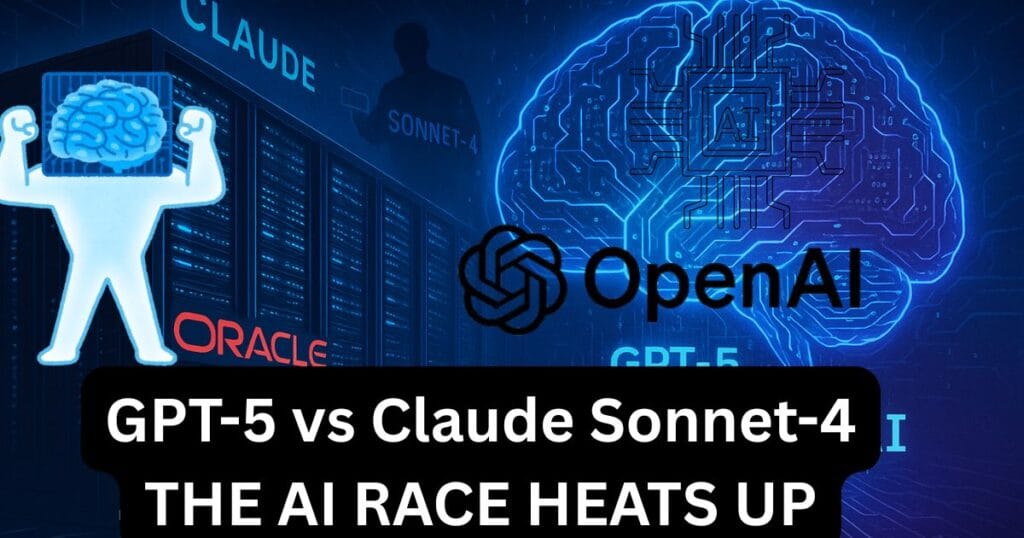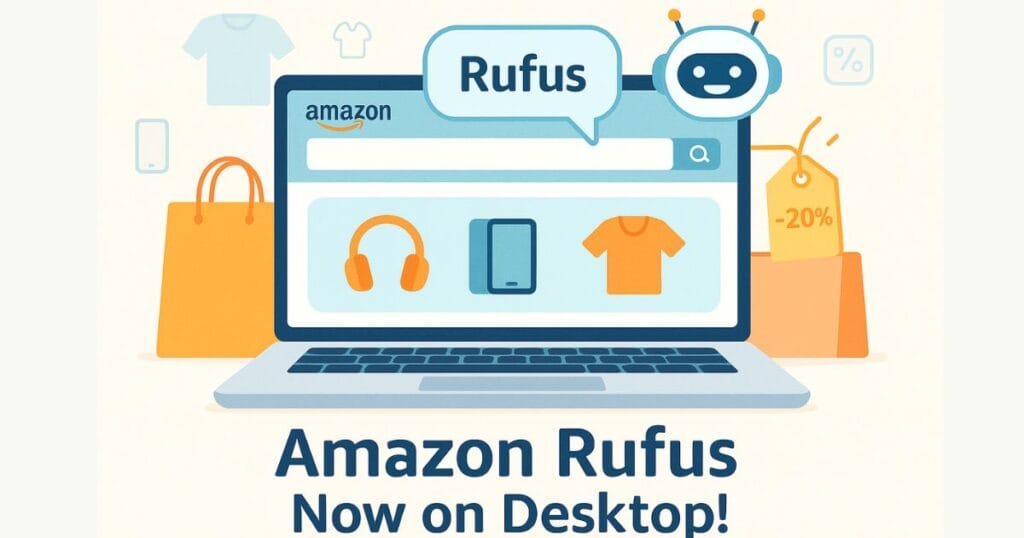Artificial Intelligence (AI) is everywhere today. From asking ChatGPT questions to getting help with coding, AI has become a part of our lives. Recently, OpenAI and Oracle made headlines with a massive $30 billion deal. Alongside this, rumors about GPT-5 are creating a buzz. But why is this deal such a big deal? What will GPT-5 bring? And is the rapid growth of AI sustainable? Let’s break it down.

The OpenAI and Oracle Deal: How Big Is It?
OpenAI, the company behind ChatGPT and GPT-4, signed a $30 billion (roughly ₹2.5 lakh crore) deal with Oracle. To put this in perspective, imagine spending ₹100 every second—it would still take over 1000 years to use up that amount! This deal is part of the Stargate project, which aims to build massive data centers in the US that can power 4 million homes.
Why OpenAI and Oracle Deal Matters
- Economic Impact: The $30 billion investment is three times OpenAI’s annual revenue of $10 billion, showing their ambition to scale AI technology.
- Job Creation: The Stargate project will create over 100,000 jobs, from engineers to construction workers.
- Tech Industry Shift: OpenAI and Oracle deal highlights the growing demand for AI infrastructure, putting pressure on cloud giants like Amazon, Google, and Microsoft.
Fact: The Stargate project of OpenAI and Oracle will generate 4.5 gigawatts of power, equivalent to two Hoover Dams.
Why Did OpenAI Choose Oracle?
When you’re working on something as big as AI, you need a reliable partner. Oracle is that partner for OpenAI. But what makes Oracle so special?
Key Features of Oracle Cloud Infrastructure (OCI)
- Speed: Oracle’s data centers are super fast, reducing the time it takes to train AI models. It’s like upgrading your old bike to a racing car.
- Security: AI deals with tons of data, like user queries or code. Oracle keeps it safe, like a bank vault.
- Reliability: Oracle’s systems are spread worldwide and never go offline. It’s like having Wi-Fi that never drops.
- AI-Specific Hardware: Oracle uses Nvidia supercomputers (like the GB200 rack) designed for AI, making it perfect for heavy workloads.
Oracle’s 52% growth rate (higher than Amazon or Google) proves it’s a leader in AI infrastructure, making it the ideal choice for OpenAI.
Why Does AI Need Such Massive Systems?
Think of AI as a super-smart student who learns from books, images, and videos. But this student needs to read millions of books in hours! Here’s what AI needs to work:
- Powerful Computers (GPUs): These are the brain of AI. More GPUs mean faster learning, like a supercharged calculator.
- Huge Data: AI requires millions of web pages, images, and videos. This needs massive data centers for storage and processing.
- Electricity: Training AI consumes as much power as a small city. For example, training GPT-4 used enough electricity to power thousands of homes for a year.
- Fast Internet: When you ask ChatGPT a question, you want an instant answer. This requires a super-fast network to avoid delays.
That’s why Oracle’s giant data centers are crucial—they can handle all these needs at once.
GPT-5: Will It Be the Smartest AI Ever?
GPT-5 is OpenAI’s next big AI model, expected to launch by late 2025. It promises to be much smarter than GPT-4. Here’s how they compare:
- GPT-4: A smart student who can read text, answer questions, and understand some images. But it sometimes gives wrong answers, like incorrect dates or facts.
- GPT-5: A super-smart student who can handle text, images, videos, and audio, with fewer mistakes and better answers to complex questions.
What to Expect from GPT-5
- Smarter Reasoning: It’ll tackle tough questions, like “How should I start a business?” or “Solve this math problem.”
- Multi-Modal Skills: It’ll understand text, images, videos, and audio. For example, you could show it a picture and ask, “What’s happening here?”
- Fewer Errors: GPT-4 sometimes makes up facts (called hallucinations). GPT-5 will have far fewer of these.
- Bigger Memory: It can remember millions of words at once, like understanding an entire book in one go.
Fact: GPT-5’s context window might reach 1 million tokens, compared to GPT-4’s 128,000 tokens.
Claude Sonnet-4 vs. GPT-5: Who Wins in Coding?
Claude Sonnet-4, built by Anthropic, is a top performer in coding. But GPT-5 could challenge it. Here’s a comparison:
| Feature | Claude Sonnet-4 | GPT-5 (Predicted) |
|---|---|---|
| Code Writing | Writes 92% accurate code (HumanEval) | Likely 95%+ accurate code |
| Debugging | Great at fixing code errors | Even better, with auto-error detection |
| Complex Projects | Slightly slower for big projects | Faster and better for complex tasks |
| Memory | Remembers 200,000 words | May remember 1 million words |
Developer Community Feedback
- Claude Sonnet-4: Coders love it for clean, accurate code. It’s like having an experienced programmer by your side.
- GPT-5: It hasn’t launched yet, but developers expect it to outshine Claude in complex coding tasks due to its advanced reasoning.
Tip: Try Claude Sonnet-4 for coding now. For GPT-5, keep an eye out for its release.
Read Official OpenAI and Oracle deal from OpenAI Site
AI Costs: Are They Sustainable?
Building AI is expensive. The $30 billion OpenAI and Oracle deal sounds like a fortune! But will it pay off? Let’s explore:
Challenges
- Power and Water: Training AI uses as much electricity and water as a small city, harming the environment.
- Money: Such huge investments put pressure on companies to make profits.
- E-Waste: Old computers and GPUs create electronic waste, which is bad for the planet.
Benefits
- Life-Changing Impact: AI can solve problems like finding cures for diseases, reducing traffic, or improving businesses.
- Renewable Energy: Companies like OpenAI are investing in solar and wind energy. For instance, OpenAI’s CEO Sam Altman invested $20 million in Exowatt, a renewable energy startup.
- Long-Term Value: If used wisely, AI’s benefits could outweigh its costs.
Fact: Training a large AI model can use as much electricity as 50,000 homes for a year.
What Will GPT-5 Change for Users?
GPT-5 will make life easier for everyone. Here’s how:
- Everyday Users: If you use ChatGPT, GPT-5 will give more accurate and natural answers. Ask, “Plan a budget vacation,” and it’ll create a full itinerary.
- Coders: Programmers will get help writing code, fixing errors, and building projects faster. It’s like having a super-smart assistant.
- Researchers: Scientists will analyze complex data better, like finding new medicines or predicting weather.
- Writers: GPT-5 will help write better stories, blogs, or marketing copy with less effort.
GPT-5 will transform industries like education, healthcare, and business automation.
ALSO READ- OpenAI’s New AI Browser: A Game Changer in How We Use the Internet
What makes the OpenAI and Oracle deal such a big deal for AI?
Hey, you might be wondering why everyone’s talking about this $30 billion OpenAI and Oracle deal. Well, imagine you’re building a rocket to go to Mars—you’d need a massive launchpad, right? That’s what Oracle is providing with its super-powerful data centers. These centers will give OpenAI the computing muscle to train huge AI models like GPT-5. Plus, this deal is creating thousands of jobs and pushing the tech world to rethink how much power AI needs. It’s not just a business deal; it’s a game-changer for how fast AI can grow!
How will GPT-5 be different from ChatGPT or GPT-4?
If you’ve used ChatGPT or GPT-4, you know they’re already pretty smart. But GPT-5 is like upgrading from a smartphone to a sci-fi supercomputer! It’ll understand not just text but also images, videos, and even audio. So, you could ask it to analyze a photo or explain a video clip. It’s also expected to make fewer mistakes (like those random wrong facts GPT-4 sometimes spits out) and handle super complex questions, like planning a business or solving tough math problems. Basically, GPT-5 will feel like a much smarter friend who’s got your back for almost anything.
Is the huge cost of building AI like GPT-5 worth it?
I get it—$30 billion for AI sounds like a wild amount of money! But think of it like building a highway: it’s expensive upfront, but it makes travel faster for everyone. AI costs a lot because it needs tons of electricity, water, and fancy computers (GPUs). However, the payoff could be huge—AI can help find cures for diseases, make businesses run smoother, or even tackle climate change. Companies like OpenAI are also investing in green energy to cut down environmental harm. So, while the price tag is scary, the long-term benefits might just make it worth it.
Conclusion: Will GPT-5 Keep OpenAI as the AI Leader?
OpenAI is currently the AI leader, but competitors like Google (Gemini), Meta (LLaMA), and Anthropic (Claude) are catching up. If GPT-5 lives up to its hype, it could solidify OpenAI’s position. But it needs to:
- Deliver Accurate Answers: GPT-5 must provide reliable and safe responses.
- Be User-Friendly: It should be easy for everyone to use.
- Ensure Ethics: OpenAI must prevent misuse and prioritize safety.
If OpenAI nails these, GPT-5 could be their biggest win yet. But in the fast-paced AI race, they’ll need to keep innovating.
“What do you expect from GPT-5? Share in the comments!”


